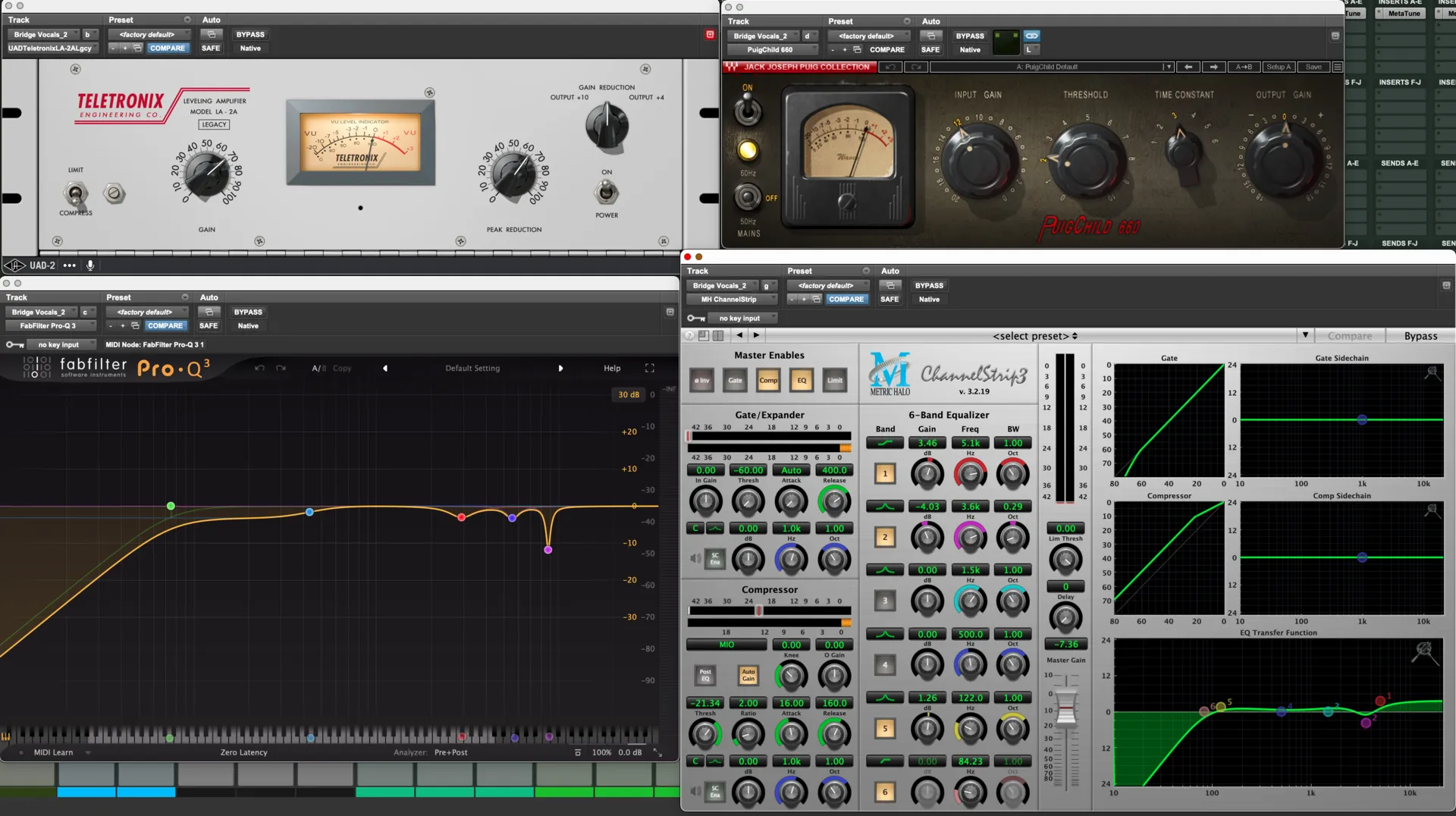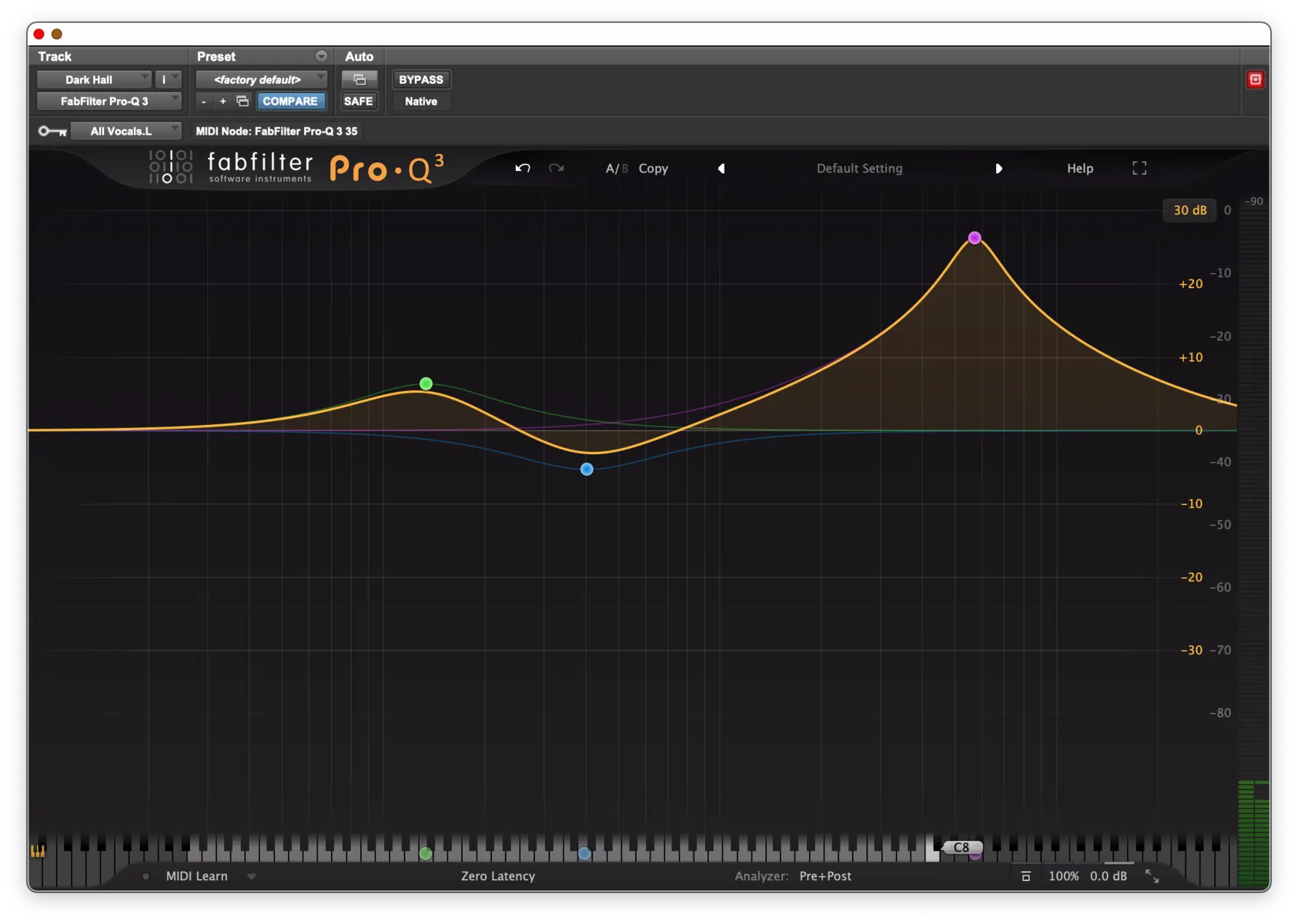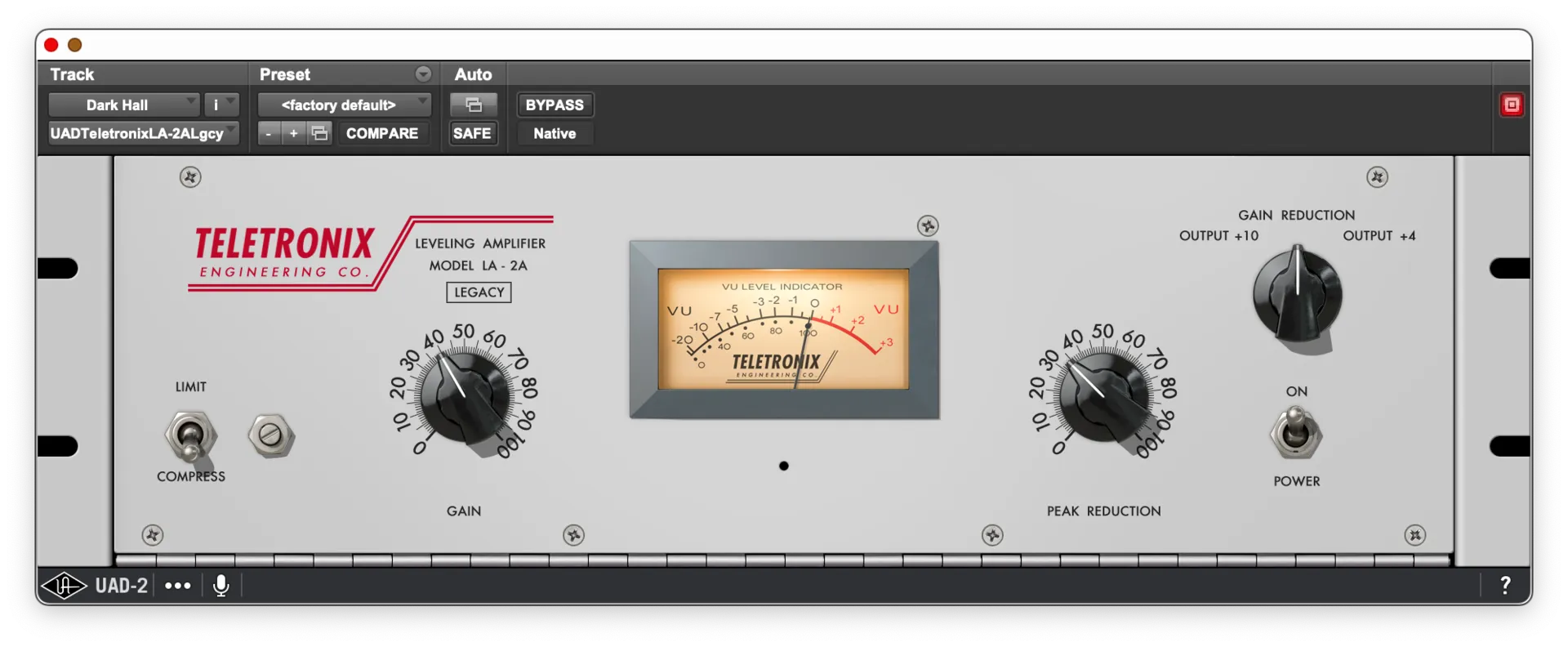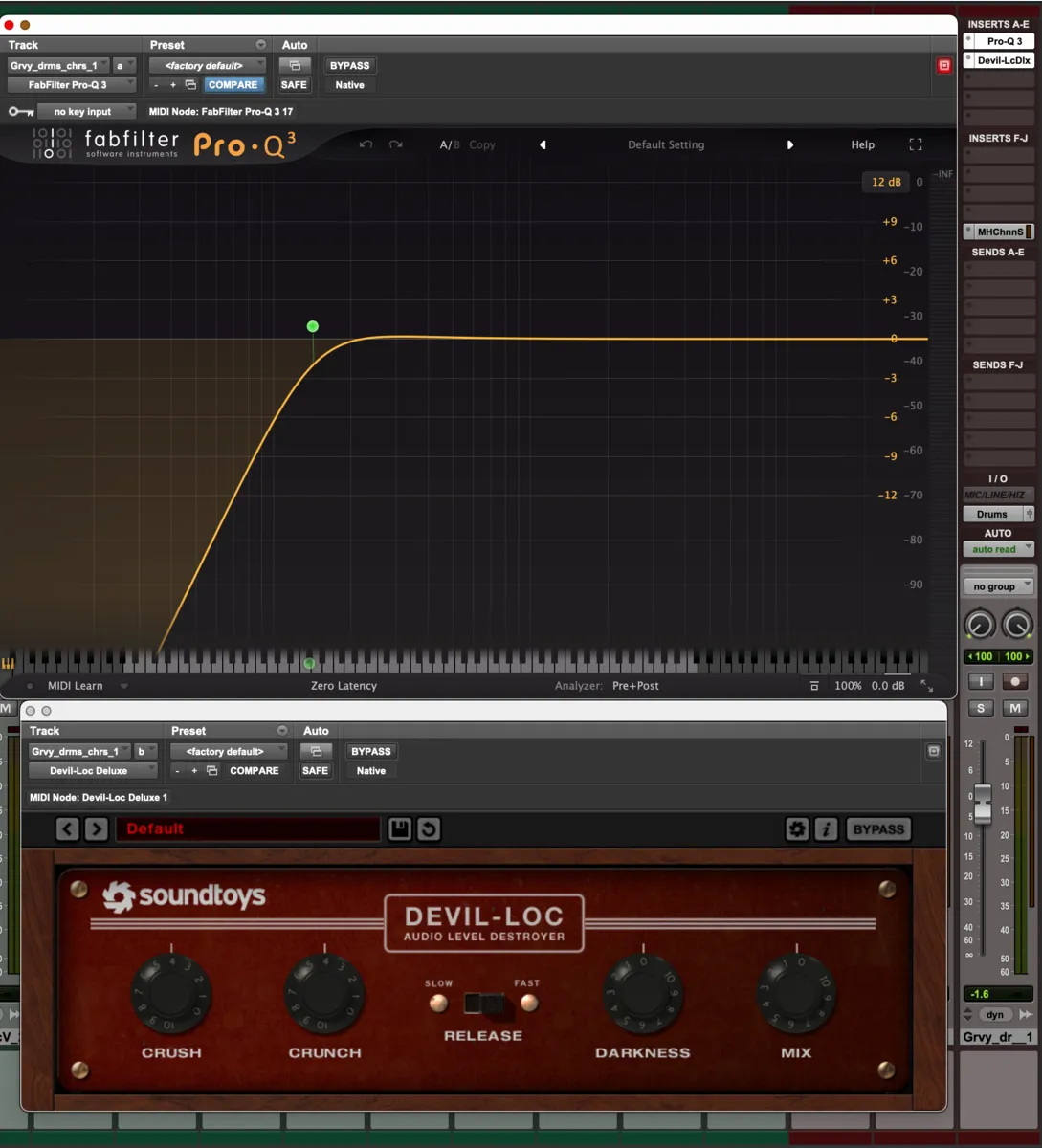Introduction
When mixing audio, a common question is whether to apply equalization (EQ) or compression first in the signal chain. Both EQ and compressors are powerful tools for shaping sound, so the order you apply them can significantly impact the final result. This article examines the pros and cons of putting EQ before compression versus compression before EQ. Factors like the mix bus, individual instruments, and desired sound will be considered. Read on to learn strategies for determining the ideal order for EQ and compression based on your goals, and how to use both effectively for professional mixes.
What is EQ?
EQ, which stands for equalization, is a powerful audio processing tool used in music production and sound engineering. EQ allows you to adjust the level of specific frequencies within an audio signal, giving you control over the tonal balance and character of the sound.
With EQ, you can boost or attenuate frequencies to achieve a desired effect. For example, boosting lower frequencies can add warmth and fullness, while attenuating harsh midrange frequencies can smooth out an instrument. EQ is applied using equalizers, which come in digital or analog hardware formats as well as software plugins.
EQs feature frequency bands that can be adjusted, allowing you to essentially turn up or down the volume at particular frequencies. The position and width of these bands determines which parts of the audio spectrum are affected. EQ plays an essential role in mixing, helping balance the sounds of different instruments, remove unwanted resonances, and create space in the stereo field. Understanding how to effectively use EQ is a fundamental skill for anyone working in music production. Whether finessing individual tracks or perfecting a full mix, EQ gives audio engineers creative control over the sonic palette and tone shaping.
What is Compression
Compression is an essential audio processing tool used in music production and audio engineering. But what exactly does compression do?
In simple terms, compression reduces the dynamic range of an audio signal. This means it decreases the difference between the loudest and softest sounds. Compression evens out variations in level, allowing you to make sounds more consistent.
It works by setting a threshold level - sounds above this level get reduced in volume. The rate and amount of compression is determined by ratio and makeup gain settings. This allows engineers to control how much and how quickly compression is applied.
Compression helps in several ways. It can add sustain and get instruments to 'sit' better in a mix by reducing peaks. On vocals, compression thickens sound and adds presence. It's also used for effects like ducking or pumping a kick drum - when the level drops rhythmically in time with the music.
From individual tracks to full mixes, compression glues everything together. It creates cohesive, professional sounding audio. Compression is applied during recording, mixing and mastering using dedicated hardware units or plugins in DAWs. Understanding compression basics is critical for those working in music production or audio engineering. Used artfully, it gives mixes more power, density and character.
Want to learn more about compression? Read our extensive blog post below
EQ before or after compression? My approach
The answer to this burning question of "equalizer or compressor first?" is unfortunately a... "It Depends". There are many factors that come into play when deciding whether you should be reaching for an EQ or the compressor threshold first.
One thing I live by when mixing is asking myself "What needs fixing?". Now I don't actually ask myself that but I feel it.
If I am listening to a song and I hear a section, sound or anything that is clashing, I go right away to the tool that can fix this issue. My mind is made up already on how the song should sound from the very first listen to the rough version, and the vision for that sound stays until I have it.
If you don't have this ability yet, and need a more calculated approach, ask yourself "is it the dynamics of the sound?" or "Are there frequencies clashing causing unwanted problems?". It should boil down to is this a volume/ dynamic problem, or is it a frequency problem.
This goes for individual tracks and group tracks. My master bus has a pre determined chain set, but it still switches around if needed. Every song is different and will have different EQ settings, and the way compressors interact changes as well. It all depends on how your signal sounds.
Using Compression before EQ
A vocal chain with a compressor before EQing.
I tend to use compression before EQ quite a bit. I especially like doing this with vocals. When hearing a raw vocal, one of the first things I hear and want to change is the dynamics of it.
Applying compression early can help smooth the vocal out and bring out the performance by making the sound tighter. In the end if your compression is dialled in right, and the vocal is recorded properly, then minimal EQ will probably be needed.
I find when you really EQ a vocal a lot, some of the character leaves the vocal.
I only EQ a lot when there is a lot wrong with it, and it is recorded in a poor environment.
Using EQ before compression
A bass chain with an EQ cuting the low end before compressing.
When should you use EQ before compression? When there are some major problems, adding compression before fixing them, can actually help bring the unwanted frequencies out a bit more than wanted.
A common example would be low end on a vocal. Sometimes you need to cut that extra low end off before you add compression, or else you get a very unwanted boomy voice.
Even very apparent resonant frequencies should be tamed a little bit before reaching for the compressor.
On the other hand, if the sound is lacking something you can EQ. before compressing as well. A common example would be adding top end to a vocal, then compressing.
You want to add top end when you want a sound more upfront in the mix. Adding the top end before compressing will help solidify the brightness in the vocal and make it stand out more.
Conclusion
So should EQ or compression come first when mixing? As we've seen, there are good arguments on both sides of the debate. Certain scenarios clearly favor one order over the other - for example, taming harshness with EQ before compressing or using compression to control dynamics before sculpting tone. However, I recommend maintaining flexibility rather than adhering to rigid rules. Always use your ears. If you are using plugins you can always just rearrange the order to what sounds best, there is no right or wrong way.
The ideal order of EQ and compression will depend on the needs of the specific track, instrument, or section of the mix. Being proficient at both EQ and compression and understanding their interplay is key. Think about the character and tone you want to achieve as well as the dynamics you want to control. Listen critically, experiment with different orders, and trust your ears.
While EQ before compression is a common starting point, the most important thing is learning how both tools complement each other. Blend EQ cuts with compression to transparently tame resonances. Or combine EQ boosts with compression to increase presence without added noise. With experience, you'll know when breaking the 'rules' gives you the best result. Don't be afraid to try unconventional orderings when a mix demands it.
The power is putting EQ and compression to work for you. Master both and unlock their combined potential for professional mixes. Let your creative vision guide the process rather than adhering to a mandated order.





